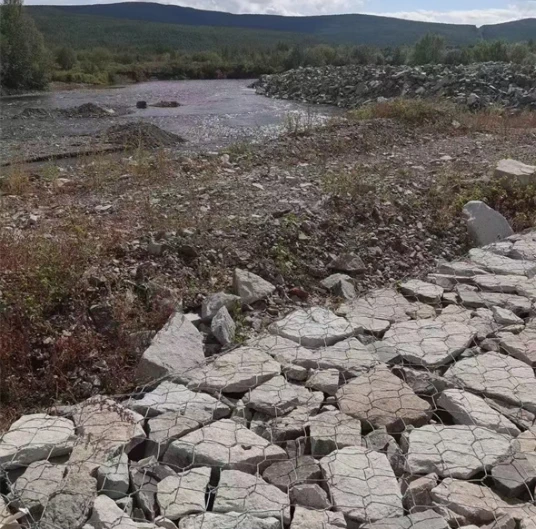ທ.ວ. . 03, 2024 14:52 Back to list
Exploring the Benefits and Uses of Gabion Fill Materials in Construction Projects
The Importance and Use of Gabion Fill in Modern Construction
Gabion fill, an essential component in modern construction and civil engineering, has gained popularity for its numerous advantages and applications. Gabions, traditionally wire mesh cages filled with stones, are versatile structures utilized for various purposes, from erosion control to landscape architecture. This article delves into the significance of gabion fill, its benefits, types, and various applications, showcasing why it has become a go-to material in contemporary infrastructure projects.
Understanding Gabion Fill
Gabion fill consists of a dense, durable material, primarily comprised of rocks, stones, or concrete pieces, contained within a wire mesh cage. These cages can be made from different materials, including galvanized steel, PVC-coated wire, or stainless steel, which provide excellent resistance to corrosion and environmental wear. The fill material is typically sourced locally, making gabions an eco-friendly and cost-effective choice for construction.
Benefits of Using Gabion Fill
1. Erosion Control One of the primary uses of gabion fill is erosion prevention. When placed along riverbanks, slopes, and coastlines, gabions effectively dissipate the energy of flowing water, reducing soil erosion. This application significantly contributes to the stability of terrain and protects infrastructure in vulnerable areas.
2. Cost-Effectiveness Gabions are often more affordable than traditional concrete structures. The materials are relatively inexpensive, and their ease of installation reduces associated labor costs. Moreover, using locally sourced stones minimizes transportation expenses, further enhancing cost-effectiveness.
3. Sustainability Since gabions utilize natural materials, they promote sustainability in construction. The permeability of gabion structures allows water to flow through, minimizing runoff and preventing flooding. Moreover, they can support vegetation growth, promoting habitat restoration and enhancing natural aesthetics.
4. Flexibility and Adaptability Gabion fill is incredibly adaptable and can be utilized in various applications and designs, from retaining walls and sound barriers to decorative landscaping elements. This flexibility allows engineers and architects to creatively address specific project needs while considering environmental impact.
5. Durability and Stability Gabions are designed to withstand significant forces, including those exerted by heavy rainfall or flooding. Their robust design ensures that they can endure harsh environmental conditions while maintaining structural integrity for decades.
gabion fill

Applications of Gabion Fill
Gabion fill's versatility lends itself to numerous applications in construction and landscaping
1. Retaining Walls Gabion walls provide an effective solution for retaining soil in areas with steep grades or unstable ground. Their weight and natural drainage capabilities help prevent soil movement, making them ideal for slopes and embankments.
2. Riverbank Protection In areas prone to flooding, gabion fill is employed to fortify riverbanks. By absorbing and distributing the energy from moving water, gabions help to prevent riverbank erosion and protect nearby structures.
3. Sound Barriers Gabion walls also serve as sound barriers in urban environments. Their mass and structure effectively absorb sound waves, contributing to a quieter atmosphere in residential and commercial areas.
4. Landscaping Features Beyond their functional applications, gabions can be creatively used in landscaping, offering aesthetic appeal. They can be constructed into seating areas, planters, or decorative screens, blending seamlessly with natural surroundings.
5. Transportation Infrastructure Gabion fill is increasingly being used in the construction of roads and railways, providing support and stability in challenging terrains. Their ability to adapt to natural changes makes them suitable for maintaining infrastructure integrity.
Conclusion
Gabion fill represents a paradigm shift in modern construction, where sustainability, cost-effectiveness, and durability are paramount. Its diverse applications in erosion control, landscaping, and infrastructure development position gabion structures as an innovative solution to contemporary engineering challenges. As the demand for environmentally friendly construction materials grows, gabion fill will continue to play a crucial role in shaping resilient and sustainable built environments for the future.
-
HESCO Gabion Baskets for Coastal Erosion Prevention
NewsAug.22,2025
-
Longevity and Durability of River Rock Gabion Walls
NewsAug.22,2025
-
How to Integrate Gabion 3D Walls in Urban Planning
NewsAug.22,2025
-
Reno Mattress Gabion Applications in Civil Engineering
NewsAug.22,2025
-
How to Install Wire Mesh for Gabion Baskets Properly
NewsAug.22,2025
-
Best Materials for Filling a Chain Link Gabion
NewsAug.22,2025
-
Wire Mesh Thickness Impact on Gabion Wall Load Bearing
NewsAug.12,2025






